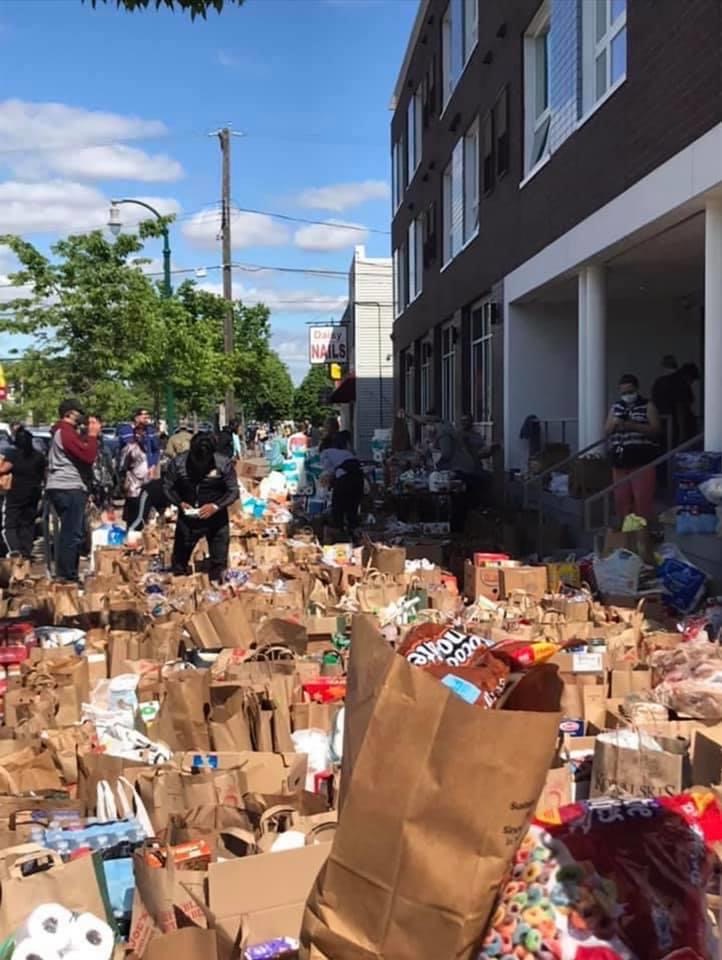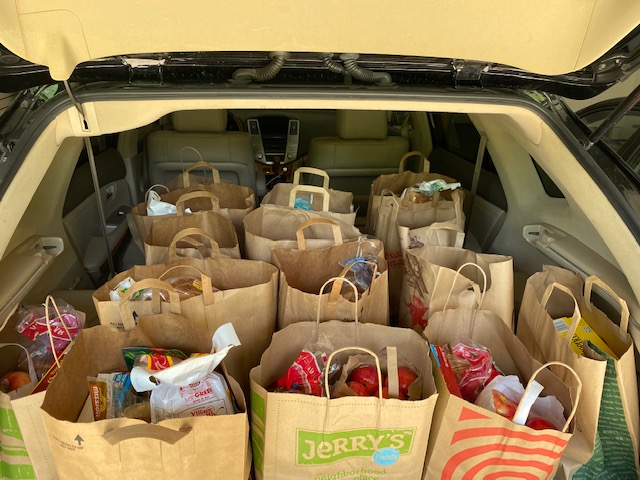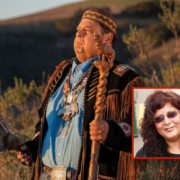The Black Angst and Indian Americans Who Try Not to See or Hear

When Ferguson, Missouri, happened in 2014, it was too far for most of my fellow Indian Americans to connect with — both geographically and metaphorically. The man killed was a black man, unarmed, shot dead by police. Riots followed, and the National Guards were called in – in full battle fatigue. It was a fearful sight, an unsettling sight — to see a battle zone on American streets. But it was not something we as Indian Americans liked to dwell much in our weekly social gatherings over great food, delicious wine and exotic desserts. Because, admit it or not, the African American population is not “seen” by many of us here.
We do not model ourselves after them but know of them only via sports, music and inner cities stories. You got it, exactly like the rest of America does, the White America that is. We are the “Model Minority,” a minority known for its brainy kids, impeccable English and respectable behavior, and we live in our beautiful suburbs – a behavior noted as appropriate by the White America. In short, as a friend likes to say — we Indians tend to think of us as white, we tolerate Hispanics, but African Americans are at the bottom of the totem pole in our world vision. Racism is rampant in us, starting from the country we come from.

Now my own Twin Cities of Minneapolis/St. Paul are burning, and it is closer to home. But if you ask my fellow Indian Americans, is it still a metaphorical distance for them. Not all, mind you – but most. After all, how many times have we already witnessed this horror — a black man killed by a white police officer — Philando Castile, Trayon Martin, Keith Scott, Jonathan Ferrell, Stephon Clark, Tamir Rice, Sandra Bland — the list is endless. I remember living in New York at the time when Amadou Diallo was murdered while taking out wallet – four officers fired 41 shots. All were acquitted. The New York Times had the story on its front pages, but I heard nary a chirp or anguish over that incident within my group. We talked of our kids, the nearest Kumon centers, the next sale and our job promotions over our chole-channas. That was well over a couple decades ago.
Dr. Bruce Corrie, Professor of Economics and Associate Vice President, Concordia University-St. Paul and an Indian by birth, told me the reason for lack of understanding or empathy for Black America amongst us Indian Americans is because most Indians came to this country after the 1960s Civil Rights movement. Prior to that, there were only a very select few. By the 1970s and 80s, the flood gates of immigration from India had opened. Indian Americans today have no idea what it meant to live in an overtly racially segregated society. “Today, we walk in with high tech degrees and think we made it on our own. Many of us do not identify ourselves as a minority, but as an extension of white American society. This is a major flaw in thinking and attitudes,” he says.
A doctor and an activist friend, believes because of our financial success, we are just not able to relate to that kind of racism and the inherent bias that we may come across at work or life, we tend to brush it off as minor infraction. “The discrimination that African Americans face and live with, we can’t relate to it at all and thus there’s complacency in having even a need to understand them.” Plus, more importantly, we also tend to believe that because we don’t perpetuate this discrimination, we don’t carry the guilt factor of being the oppressor. “Since we don’t actively engage in racism, we can’t be racists,” never mind that we all come from a country that was built on thousands of years of racism or what in India we call casteism. Unseen, hidden and tolerated and passed on from one generation to the next.

As such Indian Americans tend to be isolated and live in their rarified worlds of medicine, engineering, Silicon Valley, wealth management and Wall Street – they fail to connect with the inner America, the inner cities and the very apparent racial discrimination of this country’s underbelly, but not apparent to most Americans. Going to downtown is fun “but make sure you stay away from the north side” was the refrain I heard when we first moved to a suburb of Minneapolis some 18 years ago. “This isolation then becomes especially problematic when there are racial incidents like George Floyd’s murder,” Dr. Corrie says. So, what do we do? We watch news, we groan, we are uncomfortable over the horrific scenes captured on camera and then we go to work, or take our kids to soccer or plan the next do. Then the protests and the riots happen, and we join the collective chorus of why do they have to riot, erasing the brutality and the hundreds of years of segregation in one sweep, just like the millions of white Americans.
As the second and third generation of Indian Americans are growing up with more exposure to the African American kids at school and colleges, they are taking the lead in bridging the gap between the two communities.
There’s hope — as the second and third generation of Indian Americans are growing, as they read more about American civil rights issues and about black history, and as they are growing up with more exposure to the African American kids at school and colleges, they are taking the lead in bridging the gap between the two communities, no thanks to their parents. There are many Asian Indians who are active in the civic life of their communities and make a difference. There are more Indian American elected officials and administrators as never before and that is a good thing. Kamala Harris (not entirely Indian American but we like to adopt her as our own because, well, she is educated, beautiful and smart); Pramila Jayapal, Ro Khanna, Nikki Haley, Preet Bharara — all great role models for the present generation.
A family physician I know explains how she started looking into her patients differently – based on, yes, race, but also because it enabled her to isolate the treatment that would suit their respective lifestyles. “I could no longer treat them the same – it was not working. A Caucasian has different body type than an African-American man. A salad two times a day would not work for a family that literally had to buy food based on needs, not diet.”
As I try to organize food and supply drives for the riot-hit communities of Minnealolis-St. Paul, my friends Anu Chauhan, a child psychiatrist, calls to tell me her 20-year-old daughter Shivani, a first-year student at NYSU in New York, is headed out on her 4th drop-off delivery of the week prior to attending the protest march against police brutality. Countless other friends’ college-going kids are busy either organizing protests, participating or actively spreading progressive messages via social media – not Facebook (that belongs to you mom) but Snapchat and Instagram.
The community is also coming together to hold a vigil for George Floyd – a decision taken after much soul-searching and the need for raising awareness of inherent racism amongst us as a community. I had to reach out to the city’s umbrella organization to get something going and fast so we as community are not seen as tone-deaf when it comes to seeing and acknowledging Black America. As President Obama had said, there’s no White America or a Black America, no Red America or a Blue America. There’s only United States of America. It’s time we Indian Americans see it that way as well.
Kuhu Singh lives in Eden Prairie, MN, a suburb of the Twin Cities. Bidding adieu to journalism a decade ago, she nonetheless loves to write and express her very strong opinions on social media and blogs and sometimes in a few Indian publications. She is a Senior Digital marketing Manager for a broadcast retail company. Race relations, diversity, social issues fascinate and roil her into action and she volunteers her time with certain political organizations and community organizations.



Kuhu, you have done a wonderful job with describing what is going on in our community. Thank you for writing an article that I can shower with other Indian Americans!
Let me hold the high horse you are riding on, while you try get off it. Do you wake up feeling woke every morning?
Very nice article. Thank you for enlightening. I am forwarding it to my friends.
Let me know how I can help.
Bravo! Keep telling it like it is.
Just curious: when you say “The New York Times had the story on its front pages, but I heard nary a chirp or anguish over that incident within my group. We talked of our kids, the nearest Kumon centers, the next sale and our job promotions over our chole-channas. “, did you consider bringing up the incident yourself? If not, why not? It sounds like you have changed personally over the last couple of decades. If so, what caused the change?
There is also this hypocrite in us that while we enjoy the pluralism here, we are selfish not to promote it. In fact, there are many among us who so easily export their religious prejudices back home in India.
Thank you for a very articulate essay. Having lived in the U.S. now for 40 years, I am glad to see the second and third generation Indians are more actively involved in community activities and standing up for socially just causes. While I will never pretend to fully understand the impact of racism and negative stereotypes faced by African Americans, I did get a glimpse of it during the early 1980s when I lived in Oklahoma and suffered a barrage of racial epithets and discrimination. Unfortunately, as a young 22 year old, it was easy to shrug it off and move on. I also found that many (but not all) of my Indian friends were racist and only wanted to associate with ‘whites.’ Over the years, I have made my Indian friends uncomfortable by exposing their bias against African Americans. By no means do I want to pretend that I am better than anyone else but to improve you have to reflect and challenge your biases — think about it next time you cross the street to avoid a black man coming towards you.